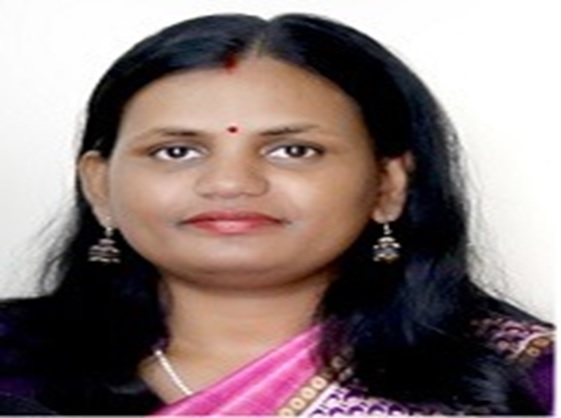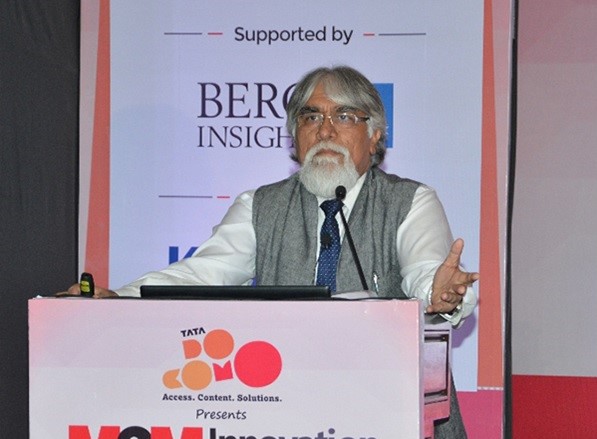| Section 1 |
Introduction to Embedded systems and digital world |
| a. |
Brief History |
| I. |
First Embedded Application |
| II. |
Different Microcontroller Architectures |
| III. |
Different kinds of Micro-controllers |
| b. |
Difference between processor and controller |
| c. |
Scope of embedded system and further advancements |
| I. |
Applications |
| II. |
Market research |
| III. |
Growth Rate |
| d. |
Digital Number System |
| e. |
Bitwise Operation |
| I. |
Addition |
| II. |
Subtraction |
| III. |
Compliment |
| f. |
Byte Operation |
| I. |
Addition |
| II. |
Subtraction |
| III. |
1’s and 2’s compliment |
| g. |
Number Conversion |
| I. |
Binary to Decimal,octal,Hexadecimal conversion |
| II. |
Octal to Binary, Decimal, Hexadecimal conversion |
| III. |
Decimal to Binary, Octal, Hexadecimal conversion |
| IV. |
Hexadecimal to Binary, Octal, Decimal conversion |
| V |
ASCII to Hex/ Hex to ASCII conversion |
| Section 2 |
Introduction to Microcontroller |
| a. |
Classification of micro-controllers |
| I. |
4-bit, 8-bit, 16-bit, 32-bit |
| II. |
Package Structure |
| III. |
Market Scenario on the basis of types of Controllers |
| b. |
Introduction to PIC high range, mid-range & low range controllers |
| c. |
Introduction to PIC16Fxxx Mid-range controller |
| d. |
Different families of PIC16Fxxx |
| e. |
Basic Arichitecture description of PIC16Fxxx |
| I. |
Pin Diagram |
| II. |
Memory Organisation |
| III. |
SFRs description |
| IV. |
Addressing Modes |
| V. |
Instruction Set Introduction |
| f. |
Introduction to general micro-controller terms |
| I. |
Program Counter |
| II. |
Accumulator (or Working Register) |
| III. |
Reset |
| IV. |
Clock Cycle, Machine Cycle, Instruction Cycle |
| V. |
Interrupts |
| VI. |
SFRs & GPRs |
| VII. |
Stack, Stack Pointer, Stack Operation |
| g. |
Brief Introduction to internal features |
| I. |
General Purpose Input-Output PORTs |
| II. |
Interrupt |
| III. |
Timers |
| IV. |
Analog to Digital Convertors |
| V. |
USART |
| VI. |
EEPROM |
| VII. |
Device Protection features – Watchdog Timer, BOR, Power up Timer |
| Section 3 |
Detailed Description to development tools |
| a. |
MPLAB IDE |
| I. |
Tools under IDE |
| II. |
Introduction to – Hi-Tech C Compiler |
| III. |
Brief description to Editor, Debugger, Assembler, Simulator, Emulator |
| IV. |
Demo of Project Making & sample programs |
| b. |
Turbo C compiler |
| c. |
Proteus ISIS |
| I. |
Brief introduction to simulator tool |
| II. |
demo to some small logic circuits |
| c. |
Programming tools |
| I. |
PICkit2 |
| II. |
Universal Programmer |
| Section 4 |
Assembly Programming Languages & Quick Review of C |
| a. |
Assembly language programming concepts |
| b. |
Introduction to instruction set |
| c. |
General programs on Proteus Simulators |
| d. |
LEDs |
| I. |
LEDs basic concept + Interfacing with controller |
| II. |
Basic LED patterns |
| e. |
Switches and keys |
| I. |
Keys basic concept + Interfacing with controller |
| II. |
Pull Up Mode / Pull Down Mode |
| f. |
Revision to C programming concepts |
| I. |
Overview of C language |
| II. |
Data Types |
| III. |
Keywords |
| IV. |
Variables |
| V. |
Operators |
| VI. |
Control Statements |
| VII. |
if statement |
| VIII. |
if-else statement |
| IX. |
Nested if statement |
| X. |
Nested if else statement |
| XI. |
Switch-case statement |
| XII. |
Loops |
| XIII. |
for loop |
| XIV. |
while loop |
| XV. |
do while loop |
| XVI. |
Loop in Loop (Nested Loop) |
| XVII. |
Arrays |
| XVIII. |
One dimensional array |
| XIX. |
Two dimensional array |
| XX |
Functions |
| XXI. |
Simple Functions |
| XXII. |
Call by Value |
| XXIII. |
Call by Reference |
| XXIV. |
Recursion |
| g. |
Pointers and string |
| h. |
Embedded C introduction |
| i. |
Difference between C and embedded C |
| Section 5 |
Embedded C Programming of GPIO and basic Internal Peripherals of Controller |
| a. |
LEDs |
| I. |
LED Introduction |
| II. |
LED Interfacing with Micro-controller |
| III. |
LED Patterns programming |
| b. |
Linear switches |
| I. |
Introduction to Switches |
| II. |
Interfacing of Switches with Micro-controller |
| III. |
Switches Programming |
| c. |
Keypad Matrix |
| I. |
Concept of Keypad Matrix |
| II. |
Interfacing of Keypad with Micro-controller |
| III. |
Programming Concept of Keypad Matrix |
| IV. |
Programming Practice |
| d. |
Liquid Crystal Display(LCD) |
| I. |
Introduction to LCD |
| II. |
Types of LCD (Character & Graphical) |
| III. |
Introduction to Character LCD & its Types |
| IV. |
Introduction to LCD Driver IC(HD44780) & Character LCD Module |
| V. |
Introduction to Pin Diagram of Character LCD |
| VI. |
Interfacing of Character LCD with Micro-controller |
| VII. |
Description of Character LCD Commands |
| VIII. |
Programming Concept of Character LCD |
| IX. |
Practice of Character LCD Programs |
| e. |
Timers & counters |
| I. |
Understanding the Timer/Counter Concepts |
| II. |
Introduction to Timer0 & Timer1 Concepts |
| III. |
Introductions to Timer SFRs and their access |
| IV. |
Programming concept of Timers to Generate delays |
| V. |
Practice of various delay programs |
| Section 6 |
Revision to Basic Electronics Components |
| a. |
Resistors |
| I. |
Introduction to Resistors |
| II. |
Types of Resistors |
| III. |
Color Coding Concept |
| IV. |
Resistors Combination Circuits (Series & Parallel) |
| V. |
Resistor Voltage Divider Rule |
| VI. |
Variable Resistors & their types |
| VII. |
AC & DC effect on Resistors |
| VIII. |
Simulation of Resistor Circuits |
| b. |
Capacitors |
| I. |
Introduction to Capacitors |
| II. |
Types of Capacitors |
| III. |
Capacitors Combination Circuits |
| IV. |
RC Circuits |
| V. |
AC & DC effect on Capacitors |
| c. |
Inductors |
| I. |
Introduction to Inductors |
| II. |
Use & Applications of Inductors Coils |
| III. |
In Transformers |
| IV. |
In Relays |
| V. |
Magnetic Field Generation( e.g. Motors, Current Sensors) |
| VI. |
Filter Circuits |
| VII. |
AC & DC effect on Resistors |
| d. |
Diodes |
| I. |
Introduction & Working of Transistors |
| II. |
Working of Transistor as a Switch |
| III. |
Sinking & Sourcing Current Concept |
| IV. |
Implementation of Logic Gates Using Transistors |
| V. |
Simulation of Transistor Circuits |
| e. |
Transistors |
| I. |
Introduction & Working of Transistors |
| II. |
Working of Transistor as a Switch |
| III. |
Sinking & Sourcing Current Concept |
| IV. |
Implementation of Logic Gates Using Transistors |
| V. |
Simulation of Transistor Circuits |
| f. |
Voltage regulator |
| I. |
Introduction to Voltage Regulators |
| II. |
Introduction to 78xx Series Regulators |
| III. |
Introduction to 79xx Series Regulators |
| g. |
Power Supply |
| I. |
Introduction to Power Supply & its Block Diagram |
| II. |
Concept of Fixed Regulated Power Supply |
| III. |
Positive(+Ve) Power Supply |
| IV. |
Negative(-Ve) Power Supply |
| V. |
Dual(+Ve & -Ve) Power Supply |
| VI. |
Concept of Variable Regulated Power Supply |
| VII. |
Positive(+Ve) Power Supply |
| VIII. |
Negative(-Ve) Power Supply |
| IX. |
Dual(+Ve & -Ve) Power Supply |
| X |
Simulation of Power Supply Circuits |
| Section 7 |
Interfacing of External Peripherals to Controller |
| a. |
Relay |
| I. |
Introduction to Relay |
| II. |
Description of Working of Relay |
| III. |
Interfacing of relay with Micro-controller |
| IV. |
Types of Relays |
| V. |
Application of Relay |
| VI. |
Simulation of Relay Circuits |
| b. |
Buzzer |
| I. |
Introduction to Buzzer & Its Working |
| II. |
Types of Buzzers |
| III. |
Interfacing of Buzzer with Micro-controller |
| IV. |
Simulation of Buzzer Circuits |
| c. |
Opto-Isolator |
| d. |
Motors |
| I. |
Introduction to Motors |
| II. |
Description of PMDC Motor Working |
| III. |
Controlling of DC Motor |
| IV. |
Using Transistor H-Bridge |
| V. |
Using Relays (1 C/O & 2 C/O) |
| VI. |
Using H-Bridge IC(L293D) |
| VII. |
Speed Control of DC Motor Concept |
| VIII. |
Introduction to Stepper Motor & Its Working |
| IX. |
Interfacing of Stepper Motor with Micro-controller |
| X. |
Controlling of Stepper Motor using ULN IC |
| XI. |
Simulation of Motor Programs |
| Section 8 |
Project work and documentation |
| a. |
Description of project development process |
| b. |
Project discussion and allotment |
| c. |
Synopsis making & distribution |
| d. |
Introduction to hardware & software techniques |
| e. |
Practice of desoldering and soldering |
| f. |
Project hardware development(component & hardware testing) |
| g. |
Firmware Designing |
| h. |
Project completion |
| i. |
Project work video clip submission |
| j. |
Final project PPT |
| k. |
Feedback submission(written and video) |
| j. |
Certificate distribution |





